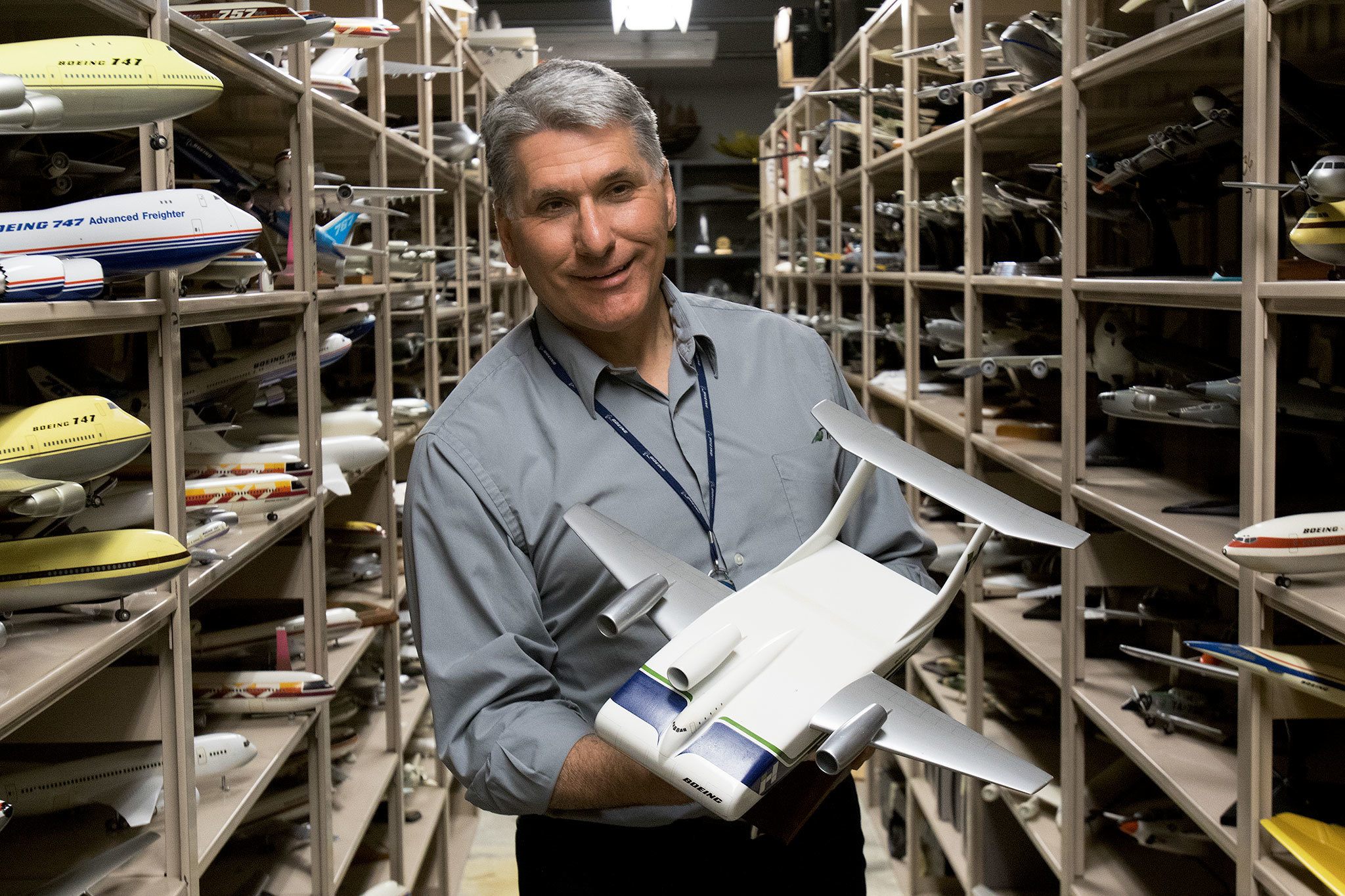By Julie Johnsson and Dagney Pruner
Bloomberg
Most Boeing Co. employees help build jetliners laden with futuristic technology. Then there’s Michael Lombardi, whose work encompasses not just carbon-fiber 787 Dreamliners but also World War II bombers and antique wood-and-linen seaplanes.
From a basement near the planemaker’s Seattle-area industrial hub, Lombardi tends to shelves full of old engineering drawings, priceless airplane models and 50,000 cans of motion-picture films documenting the evolution of flight. He’s the chief company historian. And as Boeing turns 100 on July 15, he’s never been busier sifting through boxes of donated artifacts, dredging up historic memorabilia and helping plan the centennial events.
Not that he’s complaining. Lombardi, 56, is only the third person to hold the post at Boeing and a stalwart in a small band working to preserve U.S. company records. It’s a coveted job, given the low turnover and Boeing’s role in shaping pivotal 20th century events such as the Normandy Invasion and the race to the moon. Since Lombardi took charge of the company archives in 1994, five chief executive officers have come and gone.
“The hard part was waiting 15 years for my predecessor to retire,” he said.
Boeing built a special pavilion at this week’s Farnborough Air Show in the U.K., with a mock-up of one of company founder Bill Boeing’s first wood-and-linen planes dangling from the ceiling. Blown-up photos of some of the most famous aircraft designed by Boeing and the planemakers it acquired blanketed the trade show’s central pavilion.
For all the interest in the past as the centennial approaches, Lombardi remains mindful of the business case for maintaining the collection and his staff of five people across three sites. His team has helped engineers trace how their predecessors solved a design problem. A recent task involved plumbing Boeing’s photo collection — including 4 million photographic negatives — for images to post to a new Instagram account.
The anniversary is “one small thing that we provide in the bigger picture,” said Lombardi. “I don’t believe we can survive, keep this program relevant, if we just focus on that one aspect.”
The number of corporate archivists in the United States has tripled to about 436 since 2000, based on Society of American Archivists’ membership data. Still, not all companies see the investment as paying off. Target, whose roots date to 1902, dismissed its corporate archivists three years ago.
Maintaining a trove of documents can provide a firewall for lawyers if a company is sued or its property records challenged. Lawyers at Harley-Davidson lean on its archivists when pursuing trademark, copyright and intellectual property lawsuits.
“Archives can affect the bottom line positively, but it’s also about protecting your heritage,” said Bill Jackson, who manages the motorcycle maker’s archives and chairs the business section at the Society of American Archivists.
Marketers at Coca-Cola dug through its files for inspiration before creating the Norman Rockwell-esque images for this year’s “Taste the Feeling” ad campaign. Graphic designers looked at old iconography to pick a font for the “Share a Coke” campaign.
“We don’t exist to make people look back, but to add value,” said Ted Ryan, director of heritage communications at the Atlanta-based company.
Coca-Cola’s archive features two and a half miles of shelving, and the collection goes way beyond old soda bottles, Ryan said. There’s artwork from Andy Warhol, who experimented with using Coke as a medium, and a letter from the Beatles requesting the soft drink in their dressing room while on tour. Donations flow in worldwide from the Coca-Cola Collector’s Club. The Philippines chapter alone has 1,200 members.
At Boeing, Lombardi’s workload has more than doubled as departments from the cafeteria to the legal team clamor for reminders from past eras. Then there are the boxes of donated artifacts arriving daily to be cataloged, plus the constant interview requests, which Lombardi fields with a broadcast-worthy baritone.
The trove includes a century’s worth of human touches. There are B-17 horn buttons pocketed by World War II bomber pilots, sometimes bearing lipstick from a “Rosie the Riveter” at Boeing’s factory.
He has a menu from a company soiree honoring Charles Lindbergh on Aug. 18, 1927, two months after the celebrated pilot’s first trans-Atlantic flight. Lombardi even has the contents of Alan Mulally’s desk when he left Boeing to head Ford a decade ago.
During a recent tour of the archives, Lombardi strolled by aircraft models carved from engineering mock-ups in the years before computer-assisted design. One set of miniature planes traced the evolution of the 747 under chief engineer Joe Sutter, from a rejected double-decker design to the hump-backed icon dubbed the queen of the skies.
He held up a failed design for the Boeing E-3 Sentry, a military plane better known by its acronym: AWACS. In that approach, the signature radar dome was fused into the adapted Boeing 707’s tail. Later designs settled on struts attached to the fuselage.
“The planes that we build, they just don’t spring up overnight,” Lombardi said. “There’s a lot of intellectual effort that goes into designing these things. Lots of stops, starts, with the idea that you have to get it right.”
Talk to us
> Give us your news tips.
> Send us a letter to the editor.
> More Herald contact information.
























